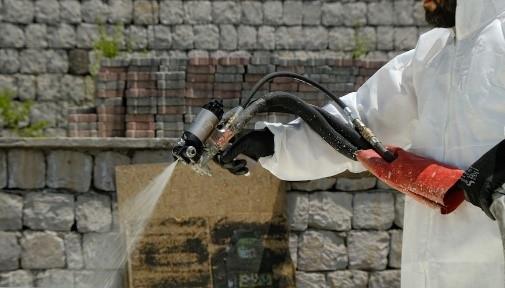
Safe Use and Handling of Diisocyanates
Posted on October 18, 2023
What are Diisocyanates?
Diisocyanates are a family of chemical building blocks used to make polyurethanes or polyurea materials like:
- Foams
- Thermoplastic and elastomers
- Paints and Inks
- Adhesives, Coatings and Sealants
- Composite Wood Products
Diisocyanates, when mixed with other chemicals help us to make items such as Furniture, Clothing, Household appliances as well as many other everyday items. It helps to keep furniture soft, clothing durable, and our fridges cold.
Diisocyanates need to be handled with care as there are risks associated when we handle or use diisocyanates incorrectly. Diisocyanates react when applied, when cured all dissocyanates are gone. There are different types of diisocyanates with different properties, are used to create PU Ashesives and Coatings. MDI is the most common used one, fortunately, this is one of the least volatile ones.
How can Diisocyanates harm you?
- Eye Contact: by splashes into your eyes
- Skin Contact: if liquid touches your skin and by contact with contaminated surfaces
- Inhalation: by inhaling vapours, aerosols (fine droplets) or dust
- Ingestion: by swallowing if you eat after handling chemicals without washing hands first
There can be no health impact if Diisocyanates are prevented from entering your body with the right Risk Management Measures
The effects of Diisocyanates on your health
Short term / one off exposure potentially –
- Irritate the mouth, throat, lungs
- Tight chest, coughing
- Difficulty in breathing
- Eyes watering
- Itching (red skin – immediately or delayed)
- Maybe hot or burn skin
Symptoms can occur several hours after exposure. A lot depends on the level of exposure and the sensitivity of the person.
How to stay safe?
- A clean working environment is essential
- Always use gloves and goggles when using chemical products
- Wear protective clothing, and long trousers / sleeves
- Wash any contaminated clothing
- Avoid eating, drinking, or smoking during work
- Wash hands with soap and water once the job is done
- Do not use solvents for washing
- Refer to the product data sheet for type of gloves to protect and only use disposable gloves once and remove gloves safely, from inside out, and dispose of correctly
- Use natural ventilation when using chemicals, alternatively use forced ventilation
- Dispose of in accordance with the requirements of local regulations
First Aid
Eye Contamination:
- Force open the eyelids
- Flush with lots of water for 15 minutes, if in doubt, keep flushing
- See an eye specialist asap
- Do not wear contact lenses, as they could complicate treatment in case of emergency
Skin Contamination:
- Immediately remove contaminated clothing and wash with soap and water
- Avoid using solvents on your skin
General Chemical Advice
- Always ensure chemicals are separated from food
- Inform a supervisor when you observe unsafe behaviour
- Know and practice the emergency procedures
Based on the EU Chemicals Legislation (REACH = Registration, Evaluation, Authorisation and Restriction).
Training is required for professional users of certain specifically marked PU Adhesives, Sealants and Foams.
This training only covers the EU requirements on safe us of Diisocyanates for PU Adhesives, Sealants and Foams.
Always respect standard safety regulations in your working environment.
